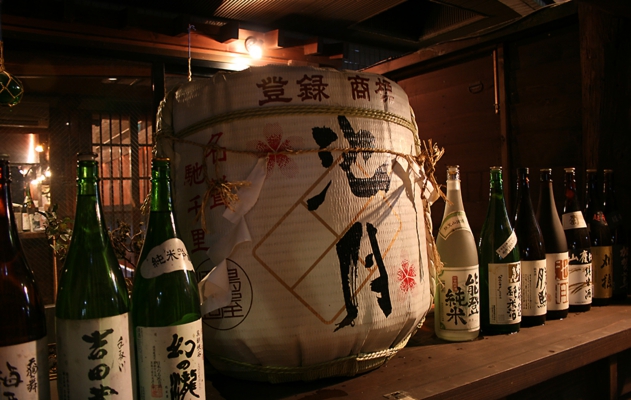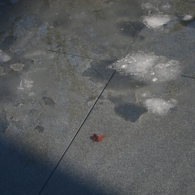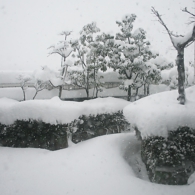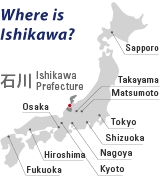

The right place to taste sake

Kaga-Tsuru by Yachiya Shuzo Brewery

水 Mizu: Water
Clear water is indispensable for brewing good sake
Sake is basically formed from rice, rice malt, and water, with 80 percent of the contents being water. No wonder most breweries are founded in rural counties where natural clear water is in abundance. We have tons of “meltwater” from great alpine peaks all through the year, such as Tateyama Renpo and Mt. Hakusan. Thus Hokuriku has become one of the famous sake-brewing regions in all Japan. Breweries can pull plenty of good water from subterranean rivers for brewing, washing sake tools, and even for the brewers' bathing! Breweries are required to give public notice in advance of their water sources. Natural water in Japan generally doesn’t contain much iron and manganese, minerals which can ruin the taste of sake.
酒米 Saka-mai: Sake Rice
Special rice for brewing sake is distinguished from edible variants
Saka-mai is specially crossbred for brewing, and hence has a larger grain in order not to be smashed into smithereens from the polishing process. Though the Yamada Nishiki brand rice from Hyogo is well known as the ultimate saka-mai, recently local “micrograin” saka-mai from our region is also being utilized.


Breweries commence their operations just before winter arrives. Low temperatures are essential for fermentation.
Brewing sake is a sensitive job. The alcohol should be fermented at a low temperature. That’s why people in Northern Japan could start brewing in the first place. Besides it was a tradition that people such as farmers, who typically are free during the snowy season, would work as brewers. Being in the brewing business was somewhat risky in the past. A notorious bacterium could attack the entire brewery, completely ruining the alcohol. It took a several years to get rid of it, sometimes bankrupting the family in the meantime. Technology has developed systems to control any temperature nowadays, yet environment still plays a vital role in brewing.
A bit of trivia for selecting sake
< Ordinary sake >
• Futsu-shu (普通酒) [ mostly for hot sake ]
Made of rice, rice malt, water, sake kasu (lees, or residual yeast), and some other ingredients.
*Affordable sake usually drunk hot (typically referred to as atsukan).
< Special-designation sake >
• Junmai-shu (純米酒) [ either for warm or chilled sake ]
Made of rice (mostly unpolished), rice malt, and water. Junmai-shu is historically the origin of sake.
• Honjozo-shu (本醸造酒) [ either for hot, warm or chilled sake ]
Made of rice (polished under 70%), rice malt, water, and distilled alcohol (under 10%). Watered down to weaken alcoholic content before release.
• Ginjo-shu (吟醸酒) [ mostly for chilled sake ]
Made of rice (polished under 60%), rice malt, water, and distilled alcohol (under 10%). Fermented slowly at low temperatures to obtain a “fruity” aroma, the so-called Ginjo-koh.
• Dai-Ginjo-shu (大吟醸酒) [ mostly for chilled sake ]
Made of rice (polished under 50%), rice malt, water, and distilled alcohol. With its process, technique and taste, it’s considered to be the premium sake.
• Junmai Ginjo-shu (純米吟醸酒) [ mostly for chilled sake ]
Made of rice (polished under 60%), rice malt, and water.
• Junmai Dai-Ginjo-shu (純米大吟醸酒) [ mostly for chilled sake ]
Made of rice (polished under 50%), rice malt, and water – the premium Junmai.
< Nihonshu-do / Alcohol Proof > *Check the label!
Very Dry: over +6.0; Dry: from 5.9 to +3.5; Medium Dry: from -3.4 to - 1.5
Medium: from +1.4 to -1.4
Medium Sweet: from -1.5 to -3.4; Sweet: from -3.5 to -5.9; Very Sweet: under -6.0
By SHIZUO
Published: December 5, 2013
Kanazawa Area
Kenroku-En Garden
Seisonkaku Villa
Kanazawa-Jo Castle
Hishi-Yagura/<br>Gojikken-Nagaya/<br>Hashizume-Mon Tsuzuki-Yagura Museum
Chaya-Gai<br>Geisha Districts
Nagamachi Buke-Yashiki-Ato (Previous Samurai District)
21st Century Museum of<br> Contemporary Art, <br>Kanazawa
Nomura-Ke<br>Samurai House
Yuwaku Onsen-Kyo Spa Village
Kanazawa Yuwaku Edo-Mura Museum
Following Matsuo Bashô’s steps in Ishikawa - 1/6 [Introduction]
Following Matsuo Bashô’s steps in Ishikawa - 2/6 [Kanazawa]
Light-Up Bus
Noto Area
Rokkosaki Cape
Mitsukejima Island
Day Trip from Kanazawa #01-Wakura-Onsen Spa Town Nanao City
Day Trip from Kanazawa #01-Ipponsugi Dohri Street Nanao City
Noto-Jima Glass Art Museum
Wajima Asaichi Morning Market
Sohjiji Soin Temple
Kaga Area
Komatsu Experience
Shirayama Hime-Jinja Shrine
Daishoji District
Kaga-Hashidate District
Higashitani Mountainous Area
Following Matsuo Bashô’s steps in Ishikawa - 3/6 [Komatsu City]
Following Matsuo Bashô’s steps in Ishikawa - 4/6 [Natadera Temple]
Following Matsuo Bashô’s steps in Ishikawa - 5/6 [Yamanaka Onsen Town]
Following Matsuo Bashô’s steps in Ishikawa - 6/6 [Daishoji District]
Rosanjin in Yamashiro Onsen Town
Hakusanroku Gibier: Local cuisine utilized wild game from the mountain area
Noto no Shio: Salt extracted from the sea
Jizake: Local sake in Hokuriku region
Buri: Yellowtail
Kaga-ryori:<br>The Traditional Local Food
Kanou-gani & Kobako snow crabs
Kaga Yasai:<br>Traditional Vegetables
Tempura
Sushi
Komatsu Udon Noodle
Event
Enyukai: Geisha Party
Geisha Performance with Dinner
Sunday Zazen Session
Custom
Shintoism
Arts and Crafts
Yamanaka Shikki: <br>Lacquer Ware made in Yamanaka
Wajima Nuri<br>Lacquerware
Wagasa<br>(Traditional Umbrella)
Kaga Temari<br>(Traditional Handball)
Kaga-Yubinuki<br>(Traditional Thimble)
Kutani-Yaki<br>Porcelain
Aochibu Blue Dot(br)Kutani Artist - Kingyoku Nakata
Kaga Hachiman Okiagari<br> Paper Doll
Kaga Kebari<br>Feather Bait
Stroll Kanazawa in Rental Kimono - 1/2 [Renting kimono]
Stroll Kanazawa in Rental Kimono - 2/2 [Strolling in Kimono]
January
Dezomeshiki<br>Firefighters' Ceremony
Enyukai: Geisha Party
February
Setsubun-Sai Festival
Yukidaruma Matsuri<br>
Festival
April
Enyukai: Geisha Party
Sakura Viewing
May
Seihakusai Festival
Kutani Chawan Matsuri
(Outdoor Market)
Otabi Matsuri Festival
Okaeri Matsuri Festival
June
Hyakumangoku Matsuri<br>Festival
July
Enyukai: Geisha Party
Abarei Matsuri Festival
Yamashiro Daidengaku Dance Festival
August
Issaki Hoh-toh Matsuri Festival
Niwaka Matsuri Festival
November
Kanou-gani & Kobako snow crabs
Enyukai: Geisha Party
December
Enyukai: Geisha Party
All Year Round
Wajima Asaichi Morning Market
Sunday Zazen Session
Light-Up Bus
Shops
Stroll Kanazawa in Rental Kimono - 1/2 [Renting kimono]
Stroll Kanazawa in Rental Kimono - 2/2 [Strolling in Kimono]
Sunday Zazen-Session
Paragliding
Snowboarding
Pottery-Making
Kanazawa Smoking<br>Etiquette Guide
Special Interview<br>after the Tohoku Earthquake
Tourist Centers
About Ishikawa Prefecture
How to Get to Kanazawa
Access from Tokyo
Access from Osaka
Access from Nagoya
Access from Takayama
How to Get to the Noto Peninsula
About Us


